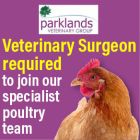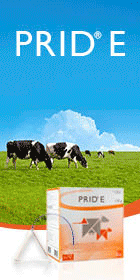Current Irish dairy herd biosecurity practices and economics
The recent launch of the National Farmed Animal Biosecurity Strategy (2021) is an opportune time to assess biosecurity practices in Irish dairy herds. In this article, Dr John Mee, PhD, MVM, MVB, DipECBHM, FRCVS, Teagasc; Dr Osayanmon W. Osawe, PhD, ESRI; Dr Marie-Claire McCarthy, PhD, MVB, DAFM; Dr Conor McAloon, PhD, MVB, DipECBHM, MRCVS, UCD; Dr Luke O’Grady, PhD, MVB, DipECBHM, MRCVS, UCD; and Dr Doris Läpple, PhD, BSc, NUI Galway, present the latest results from two national biosecurity studies on Irish dairy farms
Biosecurity has become a very topical subject globally with the SARS-CoV-2 pandemic. While to date, there has been limited information on the adoption of biosecurity practices on Irish cattle farms, international studies would suggest limited uptake of such measures. Some of this reluctance to implement best biosecurity practice (for example as recommended by the Animal Health Ireland Biosecurity TWG) may be linked to a lack of evidence showing an economic benefit to the farmer.
TWO RECENT BIOSECURITY STUDIES
In order to bridge these knowledge gaps, two new research studies were recently completed by Teagasc in conjunction with UCD and NUI Galway. Both projects examined current biosecurity practices on Irish dairy farms and one also evaluated whether such practices were associated with economic benefits. These studies were conducted against the backdrop of EU milk quota abolition in 2015 and consequent significant national dairy herd expansion. We define bioexclusion as practices for the prevention of introduction of infection to a farm and biocontainment as practices for the prevention of transmission of infection within a farm, while the term ‘biosecurity’ is the umbrella term for both.

Table 1. General bioexclusion practices adopted on larger Irish dairy farms.
MOOREPARK/UCD STUDY
Data from a control group of 50 herds in a recent national study comparing biosecurity practices of farmers who sent their heifers out to contract-rearing (n=70) or reared their heifers at home (n=50) are summarised here (McCarthy et al., 2021). These (control) farmers had larger than national average (~90 cows) herd sizes (median 121 cows; 60-501). The majority (>50 per cent) of these farmers adopted most general bioexclusion practices (Table 1) but fewer adopted purchase animal bioexclusion practices (Table 2). While adoption of general biocontainment practices was highly variable (Table 3), the vast majority of farmers vaccinated their cows and breeding bulls (Table 4), most commonly against salmonellosis, leptospirosis and IBR (Table 5).
NATIONAL FARM SURVEY STUDY
In addition to the above study, supplementary survey data from the National Farm Survey (NFS-2019) on biosecurity practices of 267 dairy farmers are summarised here (Osawe et al, 2022). The average herd size on these farms (91 cows) was similar to the national average herd size. The vast majority of these farmers vaccinated their herds, generally against two or more diseases (Table 6), most commonly leptospirosis, IBR and salmonellosis (Figure 1). Interestingly, both the proportion of farmers vaccinating and the proportion vaccinating against each disease was lower in this study with average herd sizes, than in the previous study with larger herd sizes. While the majority of farmers also conducted BTM testing, a majority also fed pooled colostrum to calves.

Table 2. Purchase animal bioexclusion practices adopted on larger Irish dairy farms.
Economics of biosecurity
In addition to collecting data on biosecurity practices, data on farm financial performance was collected from the dairy farms in the NFS. Higher gross margin (GM)/cow was associated with an increasing number of vaccinations (Table 7). Larger herd sizes, better management ability and extent of dairy specialisation were related to the use of vaccination (and more so, vaccination against more diseases). Using two or more vaccinations was associated with economic gain that increased with the number of vaccinations.
Specifically, using two or three vaccinations was associated with an economic gain of €67GM/cow while using more than three vaccinations was associated with an economic gain of €78GM/cow, when compared to using one or not vaccinating at all. Thus, the more diseases farmers vaccinated against, the higher the economic gains on those farms. Similarly, farmers who tested BTM for diseases also had higher GM/cow than farmers who did not, an economic gain of €103GM/cow. In contrast, there was no difference in GM/cow between farmers that pooled colostrum or not. Farmers with larger herd sizes were more likely to test BTM for diseases, while the opposite was true for not pooling colostrum.

Table 3. General biocontainment practices adopted on larger Irish dairy farms.

Table 4. Vaccination practices adopted on larger Irish dairy farms.
These findings indicate that vaccination and testing BTM for diseases was associated with higher GM/cow, while evidence of economic benefits of not pooling colostrum was not found. But, importantly, not pooling colostrum was not associated with reduced economic outcomes.
However, as this study utilised a cross-sectional dataset, uncontrolled biases and confounding factors may have affected the outcomes. This study design limitation should be borne in mind when interpreting/extrapolating findings.
An alternative approach would be to compare farmers’ economic outcomes before and after they adopted biosecurity measures. Towards this end, Teagasc, in collaboration with AHI, DAFM, ICBF, NUIG, SRUC, UCD and UG, has funded a new five-year (2022-2027) research project (MKAB-1763) on the production, health and economic impacts of biosecurity audit and intervention in Irish dairy herds

Table 5. Diseases vaccinated against on larger Irish dairy farms.

Table 6. Biosecurity practices adopted on average size Irish dairy farms.

Table 7. Economic impact (gross margin E/cow) for selected biosecurity practices in average size dairy herds.

Bulk tank milk sampling.

Figure 1. Diseases vaccinated against by farmers with average size dairy herds.
ACKNOWLEDGEMENTS
Teagasc funded the study by McCarthy et al, (2021) through the Walsh Scholar project MKAB-0146. The Department of Agriculture, Food and the Marine funded the study by Osawe et al, (2022) through the Surveillance Welfare and Biosecurity of Farmed Animals (SWAB) project 17/s/230.
- McCarthy, M. C., O’Grady, L., McAloon C. G. and Mee, J.F. (2021) A survey of biosecurity and health management practices on Irish dairy farms engaged in contract-rearing. Journal of Dairy Science, 104, 12859-12870, https://doi.org/10.3168/jds.2021-20500
- Osawe, O.W, Läpple, D. and Mee, J.F. (2022) Economic analysis of biosecurity adoption in dairy farming: Evidence from Ireland. Journal of Animal Science, 2022-6318, https://doi.org/10.1093/jas/skac218
1. Define biocontainment
A. Prevent introduction of infection into farm.
B. Prevent transmission of infection within farm.
C. Contain infection within farm.
D. Provision of biocontainers for infectious material.
2. Define bioexclusion
A. Prevent introduction of infection into farm.
B. Prevent transmission of infection within farm.
C. Exclusion of purchased animal from the farm.
D. Exclusion of visitors from the farm.
3. What are the most common diseases farmers with average size dairy farms vaccinate against?
A. Lungworm, Coccidiosis, Johne’s disease.
B. BVD, IBR, Leptospirosis.
C. Leptospirosis, IBR, Salmonellosis.
D. BVD, IBR, Salmonellosis.
4. What was the economic gain (€GM/cow) of using 2 or 3 vaccines compared to 0 or 1?
A. €76.
B. €79.
C. €67.
D. €69.
5. What was the economic gain (€GM/cow) of testing BTM for antibodies to infectious diseases?
A. €3.
B. €33.
C. €10.
D. €103.
ANSWERS: 1B; 2A; 3C; 4C; 5D.









